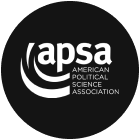Frontiers in Social and Behavioral Science features new research in the flagship journals of the Social Science Research Council’s founding disciplinary associations. Every month we publish a new selection of articles from the most recent issues of these journals, marking the rapid advance of the frontiers of social and behavioral science.

Long-term exposure to neighbors of a given foreign ancestry leads to reduced prejudice and increased generosity towards those who share that ancestry.
We study how decades-long exposure to individuals of a given foreign descent shapes natives' attitudes and behavior toward that group. Using individualized donations data, we show that long-term exposure to a given foreign ancestry leads to more generous behavior specifically toward that group's ancestral country. Focusing on exposure to Arab Muslims to examine mechanisms, we show that long-term exposure (i) decreases explicit and implicit prejudice against Arab Muslims, (ii) reduces support for policies and political candidates hostile toward Arab Muslims, (iii) increases charitable donations to Arab countries, (iv) leads to more personal contact with Arab Muslims, and (v) increases knowledge of Arab Muslims and Islam.

Higher county-level fatality rates among German soldiers during WWI increased electoral support for right-wing nationalist parties.
Can wars breed nationalism? We argue that civilians’ indirect exposure to war fatalities can trigger psychological processes that increase identification with their nation and ultimately strengthen support for nationalist parties. We test this argument in the context of the rise of the Nazi Party after World War 1 (WW1). To measure localized war exposure, we machine-coded information on 7.5 million German soldiers who were wounded or died in WW1. Our empirical strategy leverages battlefield dynamics that cause plausibly exogenous variation in the county-level casualty fatality rate—the share of dead soldiers among all casualties. We find that throughout the interwar period, electoral support for right-wing nationalist parties, including the Nazi Party, was 2.6 percentage points higher in counties with above-median casualty fatality rates. Consistent with our proposed mechanism, we find that this effect was driven by civilians rather than veterans and areas with a preexisting tradition of collective war commemoration.

Over a 30 year period, 19 percent of foreign-origin French census respondents switched to “French by birth” declarations at the next census, raising questions about the determinants of these reclassifications.
Citizenship is a fundamental boundary in contemporary societies that entails rights, a sense of belonging, and social status. Drawing on longitudinal census data, this article tracks individual changes in self-reported citizenship over 30 years in France. Respondents choose one of three categories: “French by birth,” “became French,” or “foreigner.” The first category should be stable over the life course: one is born, but cannot become, “French by birth.” Yet, our findings indicate that about 19 percent of foreign-origin respondents in a given census switch to “French by birth” declarations at the next census, in a process we call reclassification. Immigrant assimilation variables, such as nativity and length of stay, and events such as intermarriage, naturalization, and residential mobility, trigger reclassification. Yet reclassification is also higher among individuals with lower socioeconomic status and respondents of African and Southeast Asian origin, as well as those with origins in former French colonies. These findings suggest reclassification is a byproduct of immigrant assimilation, which triggers feelings of national identity, as well as status upgrading, whereby disadvantaged and discriminated groups change their citizenship declaration to compensate for low social status. Empirically novel, reclassification offers original theoretical insights into the meanings of citizenship, civic stratification, and boundary-crossing.

The authors propose a novel Bayseian nonparametric regression approach to the construction of synthetic controls, enabling the supplementation of experimental data with non-experimental data.
The availability of electronic health records (EHR) has opened opportunities to supplement increasingly expensive and difficult to carry out randomized controlled trials (RCT) with evidence from readily available real world data. In this article, we use EHR data to construct synthetic control arms for treatment-only single arm trials. We propose a novel nonparametric Bayesian common atoms mixture model that allows us to find equivalent population strata in the EHR and the treatment arm and then resample the EHR data to create equivalent patient populations under both the single arm trial and the resampled EHR. Resampling is implemented via a density-free importance sampling scheme. Using the synthetic control arm, inference for the treatment effect can then be carried out using any method available for RCTs. Alternatively the proposed nonparametric Bayesian model allows straightforward model-based inference. In simulation experiments, the proposed method exhibits higher power than alternative methods in detecting treatment effects, specifically for nonlinear response functions. We apply the method to supplement single arm treatment-only glioblastoma studies with a synthetic control arm based on historical trials. Supplementary materials for this article are available online.

Emerging physiological evidence indicates that biological females may be metabolically better suited for endurance activities, with implications for understanding subsistence capabilities and patterns in the archeological record.
Myths of “Man the Hunter” and male biological superiority persist in interpretations and reconstructions of human evolution. Although there are uncontroversial average biological differences between females and males, the potential physiological advantages females may possess are less well-known and less well-studied. Here we review and present emerging physiological evidence that females may be metabolically better suited for endurance activities such as running, which could have profound implications for understanding subsistence capabilities and patterns in the past. We discuss the role of estrogen and adiponectin as respective key modulators of glucose and fat metabolism, both of which are critical fuels during long endurance activities. We also discuss how differences in overall body composition, muscle fiber composition, the metabolic cost of load carrying, and self-pacing may provide females with increased endurance capacities. Highlighting these potential advantages provides a physiological framework that complements existing archaeological (Lacy and Ocobock, this issue) and cultural work reassessing female endurance and hunting capabilities as well as the sexual division of labor. Such a holistic approach is critical to amending our current understanding of hu(wo)man evolution.

An analysis of the documentary record between the 1960s and the 1980s illustrates Iranian perceptions of the experiences of Black Americans.
From the 1960s onwards, many Iranians closely followed Black American protests during the Civil Rights and Black Power movements in the United States. This period proved pivotal for Iranian understandings of race, where intellectuals, revolutionaries, and those in media would use US-centric histories of enslavement, racism, and Black Americans to erase nineteenth-century histories of enslavement and racism in Iran, tacitly displacing the existence of Black Iranians across the national landscape. Black American Muslims, particularly Malcolm X, emerged as the ideal form of Blackness. After the 1979 revolution, non-Black Iranians and the Iranian government would continue this focus on US-based racism through an official narrative that repeatedly defined racism as a US-only problem, ultimately cementing the erasures around histories of enslavement and Black Iranians that began with abolition in 1929. Through an analysis of speeches, memoirs, poetry, newspaper articles, photography, and other illustrated media, this article weaves together vignettes to demonstrate how the pervasiveness of racial hierarchies fashioned around US histories came to shift an Iranian vocabulary and conceptualization of race. This article traces the changes in racial discourse during the 1960s and 1970s, the 1979 revolution, and the Iran-Iraq War from an Iranian perspective.

Automated speech analysis provides new opportunities for innovation in the development of effective health interventions, but also raises new ethical and legal questions for psychological science.
Technological advances in the assessment and understanding of speech and language within the domains of automatic speech recognition, natural language processing, and machine learning present a remarkable opportunity for psychologists to learn more about human thought and communication, evaluate a variety of clinical conditions, and predict cognitive and psychological states. These innovations can be leveraged to automate traditionally time-intensive assessment tasks (e.g., educational assessment), provide psychological information and care (e.g., chatbots), and when delivered remotely (e.g., by mobile phone or wearable sensors) promise underserved communities greater access to health care. Indeed, the automatic analysis of speech provides a wealth of information that can be used for patient care in a wide range of settings (e.g., mHealth applications) and for diverse purposes (e.g., behavioral and clinical research, medical tools that are implemented into practice) and patient types (e.g., numerous psychological disorders and in psychiatry and neurology). However, automation of speech analysis is a complex task that requires the integration of several different technologies within a large distributed process with numerous stakeholders. Many organizations have raised awareness about the need for robust systems for ensuring transparency, oversight, and regulation of technologies utilizing artificial intelligence. Since there is limited knowledge about the ethical and legal implications of these applications in psychological science, we provide a balanced view of both the optimism that is widely published on and also the challenges and risks of use, including discrimination and exacerbation of structural inequalities.






